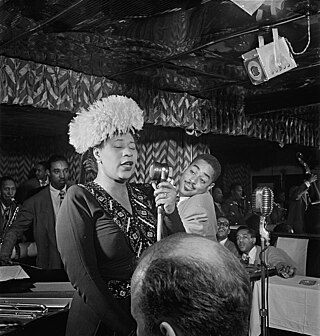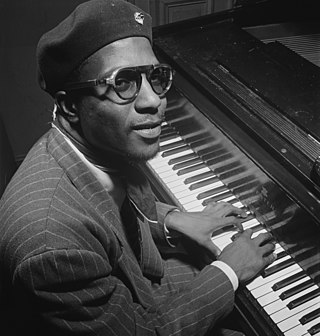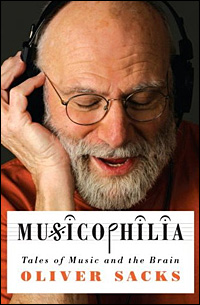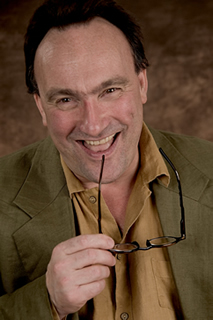Related Research Articles

Originating in vocal jazz, scat singing or scatting is vocal improvisation with wordless vocables, nonsense syllables or without words at all. In scat singing, the singer improvises melodies and rhythms using the voice solely as an instrument rather than a speaking medium. This is different from vocalese, which uses recognizable lyrics that are sung to pre-existing instrumental solos.
Improvisation, often shortened to improv, is the activity of making or doing something not planned beforehand, using whatever can be found. The origin of the word itself is in the Latin "improvisus", which literally means un-foreseen. Improvisation in the performing arts is a very spontaneous performance without specific or scripted preparation. The skills of improvisation can apply to many different faculties across all artistic, scientific, physical, cognitive, academic, and non-academic disciplines; see Applied improvisation.

Music therapy, an allied health profession, "is the clinical and evidence-based use of music interventions to accomplish individualized goals within a therapeutic relationship by a credentialed professional who has completed an approved music therapy program." It is also a vocation, involving a deep commitment to music and the desire to use it as a medium to help others. Although music therapy has only been established as a profession relatively recently, the connection between music and therapy is not new.
Dance/movement therapy (DMT) in USA and Australia or dance movement psychotherapy (DMP) in the UK is the psychotherapeutic use of movement and dance to support intellectual, emotional, and motor functions of the body. As a modality of the creative arts therapies, DMT looks at the correlation between movement and emotion.
Psychodrama is an action method, often used as a psychotherapy, in which clients use spontaneous dramatization, role playing, and dramatic self-presentation to investigate and gain insight into their lives. Developed by Jacob L. Moreno and his wife Zerka Toeman Moreno, psychodrama includes elements of theater, often conducted on a stage, or a space that serves as a stage area, where props can be used. A psychodrama therapy group, under the direction of a licensed psychodramatist, reenacts real-life, past situations, acting them out in present time. Participants then have the opportunity to evaluate their behavior, reflect on how the past incident is getting played out in the present and more deeply understand particular situations in their lives.
The Orff Schulwerk, or simply the Orff Approach, is a developmental approach used in music education. It combines music, movement, drama, and speech into lessons that are similar to a child's world of play. It was developed by the German composer Carl Orff (1895–1982) and colleague Gunild Keetman during the 1920s. Orff worked until the end of his life to continue the development and spread of his teaching method.
The Hakomi Method is a form of mindfulness-centered somatic psychotherapy developed by Ron Kurtz in the 1970s.

Jazz piano is a collective term for the techniques pianists use when playing jazz. The piano has been an integral part of the jazz idiom since its inception, in both solo and ensemble settings. Its role is multifaceted due largely to the instrument's combined melodic and harmonic capabilities. For this reason it is an important tool of jazz musicians and composers for teaching and learning jazz theory and set arrangement, regardless of their main instrument. By extension the phrase 'jazz piano' can refer to similar techniques on any keyboard instrument.
The Nordoff–Robbins approach to music therapy is a method developed to help children with psychological, physical, or developmental disabilities. It originated from the 17-year collaboration of Paul Nordoff and Clive Robbins beginning in 1958, with early influences from Rudolph Steiner and anthroposophical philosophy and teachings. Nordoff–Robbins music therapy is based on the idea that everyone, regardless of their health or abilities, can benefit from music. It suggests that music as therapy can improve communication, support change, and help people live more resourcefully and creatively. Nordoff–Robbins music therapists practice globally, having graduated from training programs in various countries such as the United Kingdom, the United States, Australia, Germany, New Zealand, Scotland, South Africa, and Asia.

Equine-assisted therapy (EAT) encompasses a range of treatments that involve activities with horses and other equines to promote human physical and mental health. Modern use of horses for mental health treatment dates to the 1990s. Systematic review of studies of EAT as applied to physical health date only to about 2007, and a lack of common terminology and standardization has caused problems with meta-analysis. Due to a lack of high-quality studies assessing the efficacy of equine-assisted therapies for mental health treatment, concerns have been raised that these therapies should not replace or divert resources from other evidence-based mental health therapies. The existing body of evidence does not justify the promotion and use of equine-related treatments for mental disorders.

In 2007, neurologist Oliver Sacks released his book Musicophilia: Tales of Music and the Brain in which he explores a range of psychological and physiological ailments and their intriguing connections to music. It is broken down into four parts, each with a distinctive theme; part one titled Haunted by Music examines mysterious onsets of musicality and musicophilia. Part two A Range of Musicality looks at musical oddities musical synesthesia. Parts three and four are titled Memory, Movement, and Music and Emotions, Identity, and Music respectively. Each part has between six and eight chapters, each of which is in turn dedicated to a particular case study that fit the overarching theme of the section. Presenting the book in this fashion makes the reading a little disjointed if one is doing so cover to cover, however, it also means one may pick up the book and flip to any chapter for a quick read without losing any context. Four case studies from the book are featured in the NOVA program Musical Minds aired on June 30, 2009.

Bradford Keeney, Ph.D. is a creative therapist, cybernetician, anthropologist of cultural healing traditions, improvisational performer, and spiritual healer. Bradford Keeney has served as a professor, founder, and director of clinical doctoral programs in numerous universities. He is the originator of several orientations to psychotherapy including improvisational therapy, resource focused therapy, and creative therapy. He is the inventor of recursive frame analysis, a research method that discerns patterns of transformation in conversation. A Clinical Fellow of the American Association for Marriage and Family Therapy, he received the 2008 Distinguished Lifetime Achievement Award from the Louisiana Association for Marriage and Family Therapy.
Mary Priestley was a British music therapist. She was credited for development of Analytical Music Therapy, a synthesis of psychoanalytic theory and music therapy. Drawing on the theories of Carl Jung, Sigmund Freud, and Melanie Klein, analytic music therapy involves the use of musical improvisation to interpret unconscious processes.
Dalcroze eurhythmics, also known as the Dalcroze method or simply eurhythmics, is a developmental approach to music education. Eurhythmics was developed in the early 20th century by Swiss musician and educator Émile Jaques-Dalcroze and has influenced later music education methods, including the Kodály method, Orff Schulwerk and Suzuki Method. Dalcroze Eurhythmics teaches concepts of rhythm, structure, and musical expression through movement. This focus on body-based learning is the concept for which Dalcroze Eurhythmics is best known. It focuses on allowing the student to gain physical awareness and experience of music through training that takes place through all of the senses, particularly kinesthetic.

Music for People (MfP) is a non-profit organization dedicated to music-making and music improvisation as a means of self-expression. Their primary activities include organizing workshops for improvisational music, hosting a four-year Musicianship and Leadership Program that provides training in music facilitation, and publishing various resources related to improvisational music.
Music therapy for non-fluent aphasia is a method for treating patients who have lost the ability to speak after a stroke or accident. Non-fluent aphasia, also called expressive aphasia, is a neurological disorder that deprives patients of the ability to express language. It is usually caused by stroke or lesions in Broca's area, which is a language-dominant area that is responsible for speech production located in the left hemisphere of the brain. However, when lesions form in Broca's area this only affects patients’ speech ability, while their ability to sing remains unaffected. Since several studies have shown that right hemispheric regions are more active during singing, music therapy involving melodic elements is deemed to be a potential treatment for non-fluent aphasia, as singing might activate patients’ right hemisphere to compensate with their lesioned left hemisphere. Aside from singing, many other music therapy techniques have also been attempted such as rhythms and poetic emphasis, which is shown to add to the effectiveness. Although there are many possible explanations for the mechanism of music therapy, the underlying mechanism remains unclear, as some studies indicate contradictory results.
Audio therapy is the clinical use of recorded sound, music, or spoken words, or a combination thereof, recorded on a physical medium such as a compact disc (CD), or a digital file, including those formatted as MP3, which patients or participants play on a suitable device, and to which they listen with intent to experience a subsequent beneficial physiological, psychological, or social effect.

Paul Newham is a retired British psychotherapist known for developing techniques used in psychology and psychotherapy that make extensive use of the arts to facilitate and examine two forms of human communication: the interpersonal communication through which people speak aloud and listen to others, and the intrapersonal communication that enables individuals to converse silently with themselves. His methods emphasise the examination of traumatic experiences through literary and vocal mediums of expression, including creative writing, storytelling, and song. He is cited by peers as a pioneer in recognition of his original contribution to the expressive therapies.
Psychosensory therapy is a form of therapeutic treatment that uses sensory stimuli to affect psychological and emotional health. In addition, psychosensory therapy is a group of therapeutic techniques that involves applying sensory inputs to treat various behaviors, mood, thoughts, symptoms, and pain. Psychosensory therapy has its roots in traditional Chinese medicine in addition to energy psychology. Some important figures in psychosensory therapy include chiropractor George Goodheart, psychiatrist John Diamond, clinical psychologist Roger Callahan, and Ronald Ruden.
Helen Odell-Miller OBE is a researcher and clinician in music therapy. She is Professor of Music Therapy and Director of the Cambridge Institute for Music Therapy Research (CIMTR) at Anglia Ruskin University in Cambridge, United Kingdom.
References
- ↑ MacDonald, Raymond AR; Wilson, Graeme B. (2014-12-18). "Musical improvisation and health: a review". Psychology of Well-Being. 4 (1): 20. doi: 10.1186/s13612-014-0020-9 . hdl: 20.500.11820/3bcc39b2-fe66-4407-b44c-8a1118baa0b1 . ISSN 2211-1522.
Bruscia, Kenneth E. 1987. Improvisational Models of Music Therapy. Springfield, IL; Charles C. Thomas Publications.
Bruscia, Kenneth E. 1998. Defining Music Therapy. Gilsum, NH: Barcelona Publishers.
Wigram, Tony. 2004. Improvisation: Methods and Techniques for Music Therapy Clinicians, Educators and Students. New York:Jessica Kingsley Publishers.